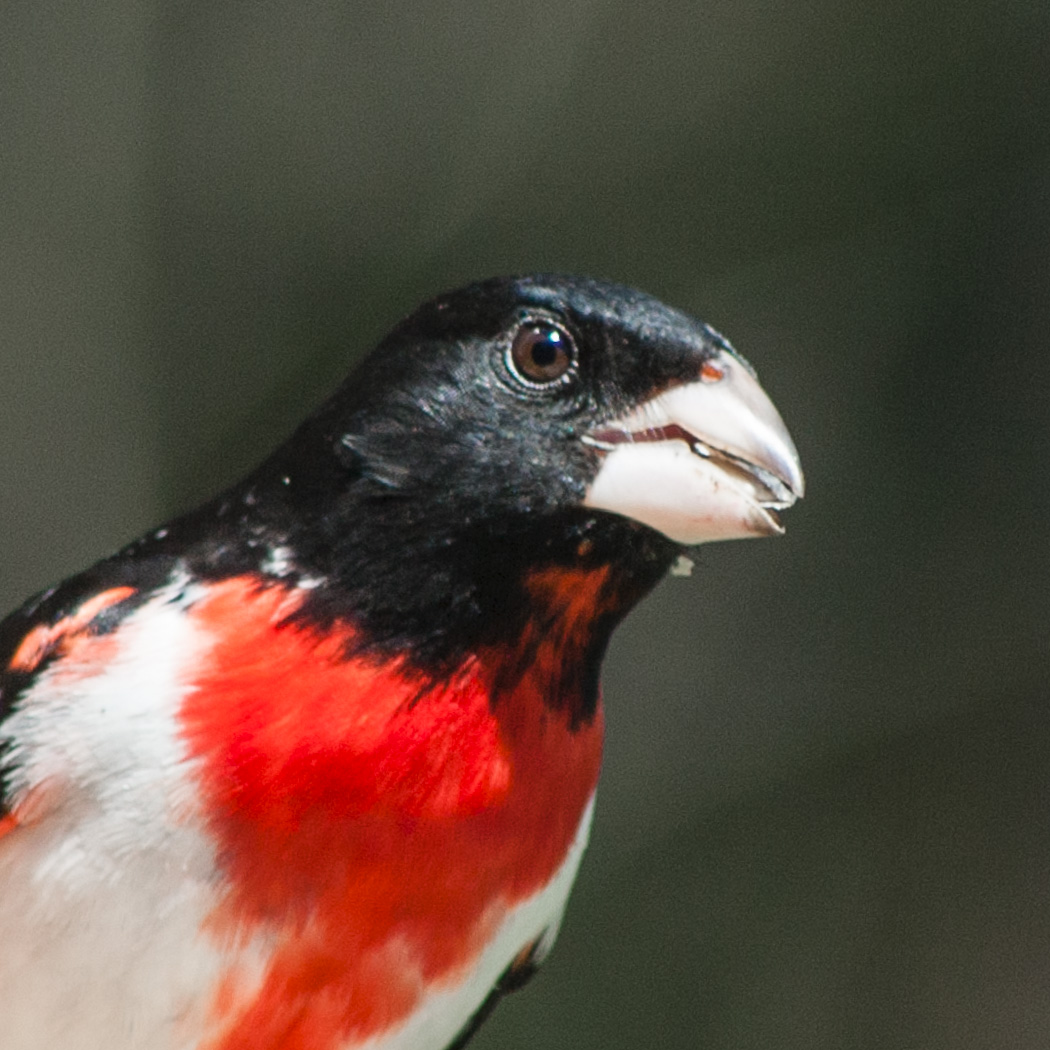On a lovely May morning Dave and I are strolling along the road when a beautiful song seems to be aimed right at us from a tree a short distance away. Its tone is kind of like a robin’s, but it starts its song with a clear whit-whit sort of whistle, and then follows it with a rapid and kind of jumbly song. Naturally I have to pull out my phone and launch Merlyn Bird ID to find out what it is. Merlyn tells me it is a rose-breasted grosbeak (Pheucticus ludovicianus). We pause to listen, and to practice sorting his song out from the morning chorus.
He’s somewhat smaller than a robin, standing seven to eight inches tall with a wingspan of 11 to 13 inches., A stocky bird with a broad chest and a medium-length squared off tail, He weighs in at around one and a half ounces. He is singing to his lady. They have both just completed the long spring migration from Central or South America. This morning, here they are gracing the roadside by Owl Acres with their lovely song. He may be new to Owl Acres this year, or he may have come back to last year’s haunts.
The rose-breasted grosbeak gets his name for two prominent characteristics. First is the rose-colored triangular patch on his breast and under his wings. This contrasts with his black head, back and wings which are splotched with white patches. His rump and belly are white, and his face has a distinct white line above his eye. That red patch on his breast also earns him the folk name cutthroat. His boldly contrasting plumage makes him a striking fellow. Mrs. Grosbeak on the other hand has to settle for a much more drab outfit. It’s streaky white below and streaky brown above. She has a prominent whitish streak over each eye and yellow under her wings.
The other prominent feature is their beaks. The “Gros” part of their name means large and refers to the large and heavy somewhat triangular conical beak that dominates both their faces. The beak, like all bird beaks, is composed of a boney core covered with tissue that is loaded with nerves and blood vessels. That sensitive tissue is then covered with a hard, horn-like layer. Unlike you or me, who can only move our bottom jaw while the upper part stays stationary, the grosbeak and other birds can move both the top part of the beak and the bottom part. This ability to move both halves of the beak makes it easy to grab and manipulate all kinds of food. Inside the beak is a mouth cavity where the bird uses its tongue to manipulate food much as we do. The bird doesn’t have any teeth, but because of its strong, heavy beak, the grosbeak, can crack nuts by bringing as much as 90 pounds of pressure to bear on the shell. That’s why they can eat things like cherry seeds and why they love sunflower seeds at the bird feeder. In spite of this superpower, they tend to rely heavily on insects, seeds and fruits they find by foraging in the trees.
The male grosbeak is a family man. He comes back first to establish his territory each year and then starts courting the ladies. Once they’re engaged, he’ll help her build the nest out of twigs and grass. It’s not the most highly engineered nest—in fact it’s so sketchy that you might be able to see the eggs right through the bottom of it, but it seems to do the job. After she lays the eggs, he’ll help incubate them for the next couple of weeks, and will help feed the nestlings once they hatch.
The rose-breasted grosbeak is native to the Americas. It is not an endangered species. However, between 1966 and 2015, according to Partners in Flight, bird counts indicate a 35% reduction in population with a current estimate of 4.1 million. The decline is due in part to the fact that they are often captured, caged and sold as singing pets in their winter range. Reduction in habitat for their winter range may also contribute to their decline.
By September they’ll all be heading to tropical forests in the Caribbean, Central and South America. Far away from the cold winds of Owl Acres winter.
Photo by Paul VanDerWerf

1 comment
Another delightful read! I love the rose-breasted grosbeak, too.